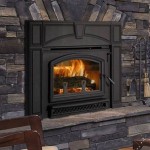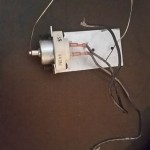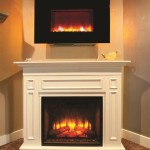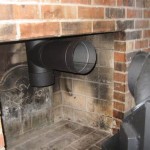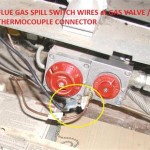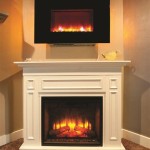Here's an article about small wall-mounted fireplaces, adhering to your specifications:
Small Wall Mounted Fireplaces: Efficiency and Aesthetics in Compact Spaces
Small wall-mounted fireplaces offer a compelling solution for individuals seeking the ambiance and warmth of a traditional fireplace without the substantial footprint. These units, designed to be affixed directly to a wall, have gained popularity due to their space-saving design, ease of installation, and diverse aesthetic options. The market provides a range of fuel types, including electric, gel, and gas, each with its own advantages and disadvantages, allowing consumers to select a model that best suits their needs and preferences.
This article will explore the key aspects of small wall-mounted fireplaces, focusing on their benefits, types, installation considerations, and maintenance requirements. Understanding these factors is crucial for making an informed decision when considering incorporating such a feature into a home or office environment. The goal is to provide a comprehensive overview that enables readers to evaluate whether a small wall-mounted fireplace is the right choice for their specific circumstances.
Space Optimization and Design Versatility
A primary advantage of small wall-mounted fireplaces is their ability to optimize space. Unlike traditional fireplaces that require significant floor space, wall-mounted units occupy minimal area, making them ideal for apartments, condominiums, and smaller rooms where square footage is at a premium. This feature is particularly appealing in urban dwellings where space is often limited and interior design must prioritize functionality and efficiency.
Beyond saving space, wall-mounted fireplaces offer considerable design versatility. They are available in a wide array of styles, from contemporary and minimalist designs to more traditional and ornate options. This allows homeowners to integrate the fireplace seamlessly into their existing décor, whether the goal is to create a focal point in a living room, add warmth to a bedroom, or enhance the atmosphere of a home office. The availability of different materials, finishes, and flame effects further expands the design possibilities, enabling customization to match specific aesthetic preferences.
Furthermore, wall-mounted fireplaces can be strategically placed to maximize their visual impact. They can be mounted at eye level to create a focal point or positioned higher on the wall to create a sense of spaciousness. The flexibility in placement allows for creative integration into various room layouts and design schemes.
Types of Small Wall Mounted Fireplaces
The market offers several types of small wall-mounted fireplaces, each distinguished by its fuel source and operational characteristics. The most common types include electric, gel, and gas fireplaces. Each type has its own set of advantages and disadvantages, influencing factors such as heating efficiency, installation complexity, and environmental impact.
Electric Wall Mounted Fireplaces: Electric fireplaces are perhaps the most popular type due to their ease of installation and operation. These units simply plug into a standard electrical outlet and use electricity to generate heat. They often feature realistic flame effects created by LED lights and rotating mirrors, mimicking the appearance of a real fire. Electric fireplaces are generally energy-efficient, as they convert almost all the electricity they consume into heat. They also offer the benefit of adjustable heat settings and flame intensity, allowing users to customize the ambiance and temperature. A key advantage of electric fireplaces is that they do not produce any emissions or require venting, making them a clean and safe option for indoor use. However, the heat output may be lower compared to gas or gel fireplaces, making them more suitable for supplemental heating rather than primary heating.
Gel Wall Mounted Fireplaces: Gel fireplaces utilize canisters of gel fuel to produce a real flame. These fireplaces offer the aesthetic appeal of a traditional fire without the need for a chimney or gas line. Gel fuel is typically made from isopropyl alcohol and a thickening agent, and it burns cleanly, producing minimal smoke or odor. Gel fireplaces are relatively easy to install, requiring only mounting the unit on the wall. However, the heat output is often lower than that of gas fireplaces, and the cost of gel fuel can be a recurring expense. Additionally, it's essential to use gel fuel specifically designed for fireplaces to ensure safe and efficient operation. Proper ventilation is still important, even with gel fireplaces, to ensure adequate air circulation.
Gas Wall Mounted Fireplaces: Gas fireplaces offer the highest heat output among the three types, making them suitable for providing substantial warmth to a room. These fireplaces require a connection to a gas line (natural gas or propane) and a venting system to exhaust combustion byproducts. Installation typically requires professional assistance to ensure safe and compliant connection to the gas supply and proper venting. Gas fireplaces offer realistic flames and can be controlled with a thermostat or remote control for convenient operation. While gas fireplaces provide excellent heating performance, they also represent the highest initial investment due to the cost of installation and the need for a gas line and venting system. Furthermore, gas fireplaces require regular maintenance to ensure safe and efficient operation.
Installation and Safety Considerations
Proper installation is critical for ensuring the safe and efficient operation of a wall-mounted fireplace. The installation process varies depending on the type of fireplace, but certain fundamental considerations apply to all models. Careful attention to these factors can prevent accidents and ensure long-term performance.
Wall Preparation: Before installing a wall-mounted fireplace, it's essential to assess the wall's structural integrity. Ensure that the wall can support the weight of the fireplace, especially for larger or heavier models. Reinforcement may be necessary for weaker walls. It's also crucial to identify the location of electrical wiring, plumbing, and gas lines before drilling any holes. Using a stud finder can help locate wall studs for secure mounting. For electric fireplaces, ensure that there is a nearby electrical outlet with sufficient amperage to handle the unit's power requirements. For gas fireplaces, a licensed professional must install the gas line and venting system in accordance with local building codes.
Clearance and Ventilation: Adequate clearance around the fireplace is essential to prevent fire hazards and ensure proper ventilation. Keep flammable materials, such as curtains, furniture, and paper, away from the fireplace. Follow the manufacturer's recommendations for minimum clearance distances. For gas fireplaces, proper venting is crucial to exhaust combustion byproducts safely. The venting system must be installed correctly to prevent carbon monoxide buildup, which can be deadly. Regular inspection and maintenance of the venting system are necessary to ensure its continued effectiveness. Gel fireplaces also benefit from adequate ventilation to prevent the accumulation of fumes from the burning gel fuel.
Safety Features: Many modern wall-mounted fireplaces come equipped with safety features such as overheat protection and automatic shut-off mechanisms. These features can help prevent accidents and protect the unit from damage. Overheat protection automatically shuts off the fireplace if it detects excessive heat buildup, preventing overheating and potential fire hazards. Automatic shut-off mechanisms turn off the fireplace if it tips over or is accidentally left unattended. Consider choosing a model with these safety features to enhance peace of mind.
Professional Installation: For gas fireplaces and any electrical work that requires wiring, it is highly recommended to hire a qualified professional. This is particularly important for gas fireplaces, as improper installation can lead to gas leaks and carbon monoxide poisoning. A licensed technician can ensure that the fireplace is installed correctly and safely, in compliance with local building codes and regulations. Professional installation may also be necessary for electric fireplaces if the electrical outlet requires modification or if the fireplace is hardwired into the electrical system.

Wall Mounted Fires Bringing Style Back To Small Rooms Blog

Tips To Follow When Choosing Wall Mounted Electric Fireplace Proweld

Recessed Or Wall Mount Electric Fireplace Installations Explained Touchstone Home S Inc

Smallbee Electric Fireplace

Wall Mounted Electric Fires Bringing Style Back To Small Spaces Living

Boyel Living 60 In Recessed Ultra Thin Wall Mounted Electric Fireplace Black Wf Ep24706 The Home Depot

Livingandhome Black Wall Mounted Electric Fire Fireplace Temperature Adjustable 50 Inch Diy At B Q

1524mm Flush Insert Or Wall Hung Designer Electric Fireplace 2024 Model

Paramount Vertical Curved Electric Fireplace 27 In Balck Réno Dépôt

Cambridge Callisto 30 In Electric Wall Mounted Fireplace Heater With Flame Crystal Rock Display Adjustable Heat Remote Cam30wmef 1blk Com

